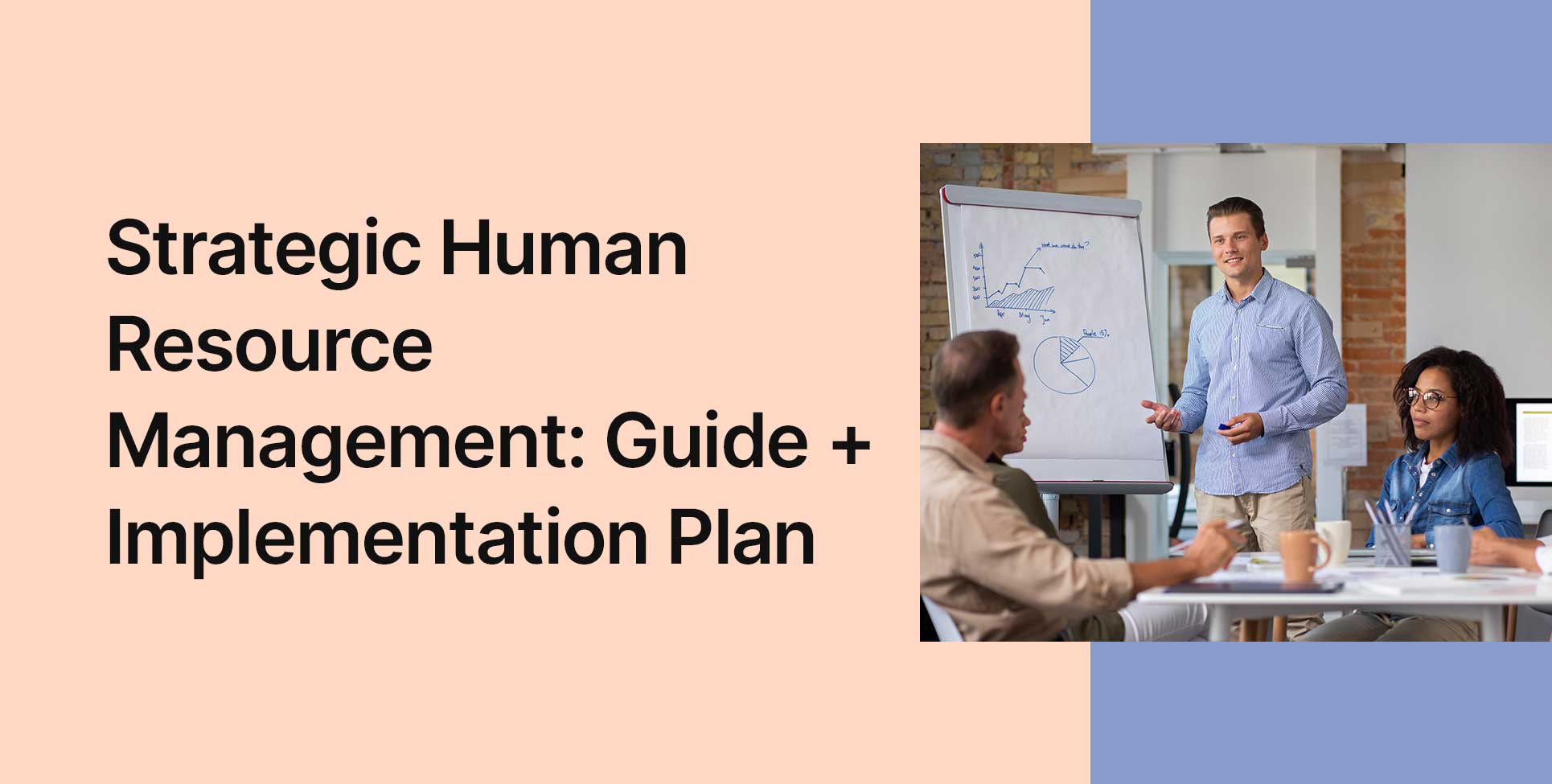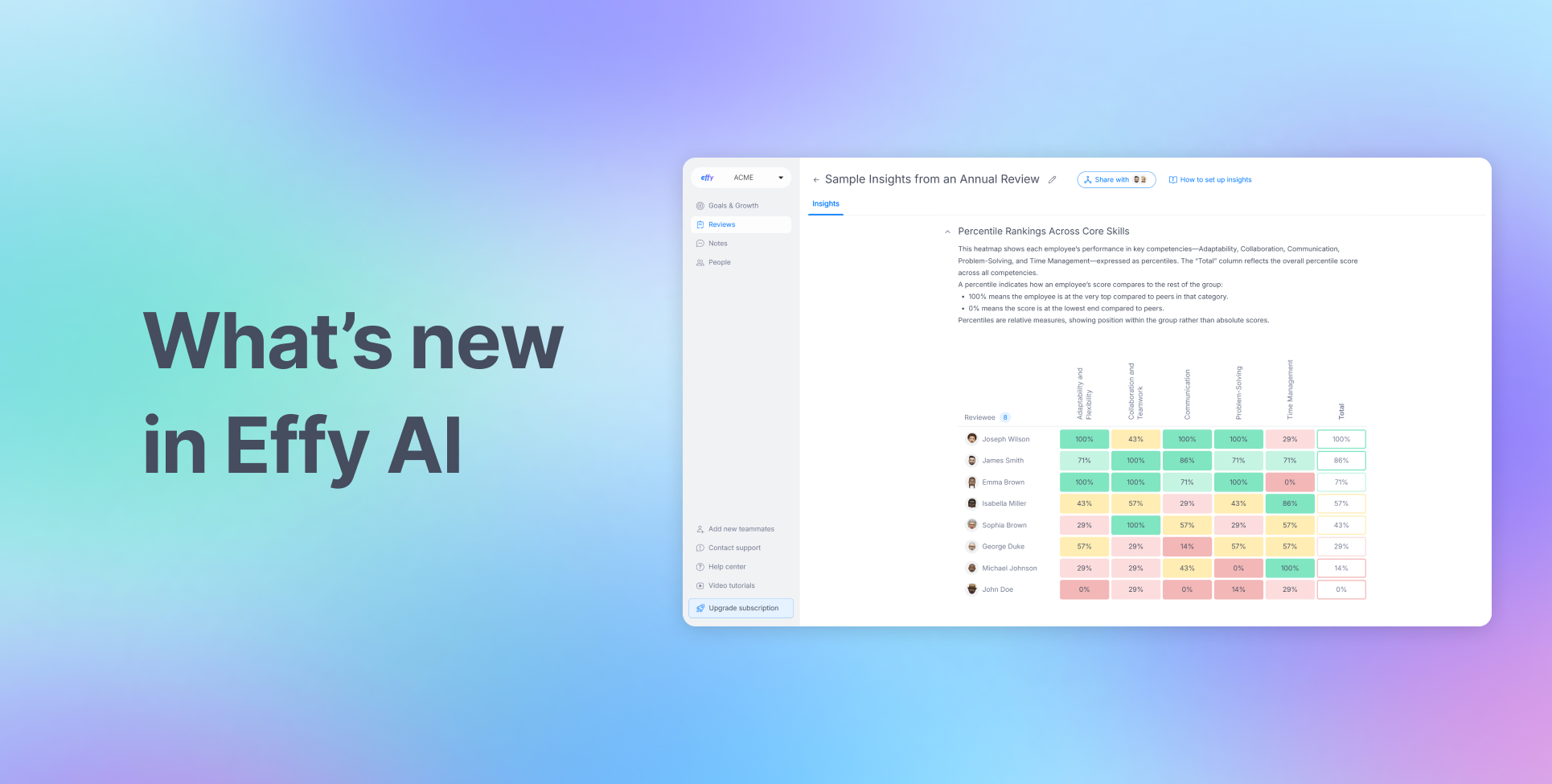Your best competitive advantage walks through your office doors every morning. Yet most organizations still treat HR practices as a cost center rather than a strategic driver. Strategic human resource management transforms this outdated thinking by positioning talent decisions at the heart of business success.
Companies that excel understand a fundamental truth: every broader business strategy depends on having the right people to execute it. Whether pursuing digital transformation, market expansion or talent management, your workforce capabilities determine success or failure in today's knowledge economy.
This shift from administrative human resources department to strategic partnership has become essential for survival. Companies embracing strategic human resource management report higher profitability, stronger innovation and better market adaptability. The data shows clear winners emerging from companies that treat talent as their primary strategic asset.
What is strategic human resource management?
Strategic human resource management (SHRM) is the practice of aligning people-related decisions with business objectives to create sustainable competitive advantage. Unlike traditional HR practices which focuses on administrative tasks, strategic HR management treats human capital as a critical driver of success and long-term growth.
This approach involves systematically planning, developing and managing workforce capabilities to support overall business strategy. Organizations integrate talent acquisition, performance management and employee development into their overall strategic planning process. The goal is ensuring the right people with the right skills are in the right positions at the right time.
Modern strategic HR goes beyond basic compliance and employee relations to encompass workforce analytics, succession planning software integration and predictive modeling. A comprehensive human resource management strategy helps corporations anticipate future talent needs, identify skill gaps and develop proactive solutions that maintain competitive positioning in dynamic markets.
{{banner-3="/banner-page"}}
Why strategic HR management matters in 2025
Today's business environment demands more than traditional HR departments can deliver. Organizations with strategic human resources capabilities consistently outperform competitors through better talent decisions, stronger cultures and more agile responses to market changes and workforce disruptions.
Business impact and competitive advantage
Strategic HR drives measurable business outcomes by aligning talent initiatives with organizational objectives. Companies with effective HR strategy report 30% higher revenue per employee, 40% lower turnover rates and 70% higher employee engagement scores compared to those with reactive approaches.
Data-driven evidence of strategic HR success
Research consistently demonstrates the financial benefits of strategic human resources investment. Companies with strong people strategies achieve 2.3 times higher cash flow per employee and are 5 times more likely to be high-performing companies than those treating HR as purely administrative function.
Modern workforce challenges requiring strategic solutions
Remote work, skills shortages and generational diversity create complex challenges that demand sophisticated responses. Strategic HR management enables organizations to navigate talent scarcity and implement effective performance management systems that attract and retain top performers across changing work environments.
Key components of strategic human resource management
Effective strategic human resource management consists of interconnected elements that work together to drive employee performance. Each component must align with business objectives while supporting the others to create a cohesive people strategy that maximizes human capital potential.
Talent acquisition and workforce planning
Strategic talent acquisition goes beyond filling open positions to building future organizational capabilities. HR professionals analyze business forecasts and develop proactive recruitment strategies that anticipate needs rather than react to immediate demands for sustainable growth.
Takeaway: Plan talent needs 2-3 years ahead based on business strategy, not current openings.
Performance management and development
Modern employee performance management creates continuous feedback loops that drive professional growth. This involves setting clear expectations, providing regular coaching, tracking progress against strategic objectives and developing employees' capabilities to meet evolving business requirements effectively.
Takeaway: Focus on ongoing development conversations rather than annual review cycles for better results.
Compensation and benefits strategy
Strategic compensation aligns pay structures with business goals while attracting and retaining top talent. A comprehensive human resource management strategy includes market analysis, performance-based incentives and benefits packages that support organizational culture and employee needs across different demographics.
Takeaway: Design compensation to reward behaviors and outcomes that drive business success.
Culture and employee engagement
Culture becomes a strategic asset when deliberately shaped to support business goals. Organizations have to define desired values, create experiences that reinforce those values and measure employee engagement levels to ensure the human resources department builds cultures that enhance performance and retention.
Takeaway: Treat culture as a measurable business driver, not an abstract concept.
Change management and organizational development
Strategic HR anticipates and guides organizational transformation through structured change management processes. This includes organizational design optimization, communication strategies, training programs and support systems that help employees adapt to new structures, technologies or business models successfully.
Takeaway: Build change capability as a core organizational competency for long-term adaptability.
An example of SHRM in action
Consider a retail chain facing digital disruption and declining store traffic. Their strategic human resource approach transforms the workforce from traditional sales associates into omnichannel experts. Rather than cutting staff, they reskill employees to handle online orders, virtual consultations and social commerce.
HR leaders partner with executives to redesign roles around customer experience rather than transactions. This strategic HR plan preserves jobs while building capabilities for digital growth. Employee engagement increases as workers gain valuable skills and the company maintains market position through workforce transformation rather than replacement.
Strategic management steps the company would take:
- Conduct skills assessment to identify digital competency gaps across all store locations
- Launch "Digital Ambassador" program training 20% of staff as peer mentors
- Redesign compensation to reward online sales conversions and customer satisfaction scores
- Create career pathways showing progression from sales associate to digital experience specialist
- Implement weekly team huddles to share digital selling success stories and best practices
- Partner with local colleges to offer certification programs in e-commerce and social selling
- Establish metrics tracking digital revenue per employee and cross-channel customer retention
- Build internal mobility program allowing store employees to transition to corporate digital roles
How to develop and implement an SHRM plan
Creating a strategic human resource management plan requires a systematic assessment of current capabilities and future needs. Success depends on establishing clear connections between business objectives and people strategies while securing stakeholder buy-in throughout the implementation process.
This structured approach ensures HR initiatives directly support a more strategic approach.
Conduct a comprehensive workforce analysis
Start by evaluating your current capabilities against future workforce requirements. This analysis reveals succession risks and developing strategies that inform decisions. Understanding your talent landscape enables targeted interventions that address specific organizational needs rather than generic HR practices.
- Map current employee skills, competencies and career aspirations through surveys and assessments
- Identify critical roles and potential succession gaps using workforce analytics tools
- Benchmark your talent capabilities against industry competitors and best-in-class organizations
Align HR strategy with business objectives
Connect every HR strategic plan directly to specific business goals and measurable outcomes. This alignment ensures resources focus on activities that drive organizational success. Clear linkages between people strategies and business objectives help demonstrate HR's value while creating a positive work environment.
- Define specific HR department metrics that correlate with key business performance indicators
- Create strategy maps showing how talent initiatives support revenue, quality, or growth targets
- Establish quarterly review cycles to adjust HR priorities based on business strategy changes
Design integrated talent programs
Build cohesive talent programs where recruitment, development and retention efforts reinforce each other. Integration prevents silos and creates consistent employee performance throughout the company. Connected programs maximize impact while reducing redundancy and improving overall employee engagement levels.
- Develop competency frameworks that link hiring criteria, performance standards and development paths
- Create career pathways showing progression opportunities across different roles and departments
- Implement technology platforms that connect recruitment, onboarding, learning and performance data
Establish performance management systems
Create performance management processes that drive both individual growth and organizational results. Effective systems balance accountability with development, providing regular feedback while tracking progress toward strategic goals. Modern approaches emphasize continuous improvement over annual evaluations.
- Replace annual reviews with monthly check-ins focused on goals and development
- Train managers on providing constructive feedback and conducting career advancement conversations
- Link performance metrics to strategic objectives and reward achievement through recognition programs
Build change readiness and communication
Prepare the organization for SHRM implementation through structured change management and clear communication. Success requires engaging managers and employees in understanding new approaches and their benefits. Proactive communication prevents resistance while building enthusiasm for strategic HR initiatives.
- Develop communication plans targeting different stakeholder groups with relevant messaging
- Create pilot programs to test new approaches and generate early success stories
- Establish feedback mechanisms to gather input and adjust implementation based on employee responses
Measuring strategic human resource management
Effective measurement transforms strategic human resources from abstract concepts into concrete business value. HR leaders need to keep track of meaningful metrics that demonstrate how people initiatives impact corporate performance. Regular monitoring ensures human resource management efforts remain aligned with evolving business needs while providing data to optimize future investments.
Key metrics and KPIs that matter
Organizations need balanced scorecards combining leading and lagging indicators to assess strategic human resource effectiveness. Such metrics should connect employee behaviors with business outcomes, measuring both operational efficiency and strategic impact. The right KPIs help demonstrate how employee relations initiatives directly support business goals.
How to measure:
- Track talent acquisition metrics including time-to-fill, quality of hire scores and first-year retention rates
- Monitor engagement scores, productivity per employee and internal promotion rates quarterly
- Measure skill development completion rates and competency improvements against strategic requirements
ROI measurement for HR initiatives
Calculating return on investment for HR programs requires linking people investments to financial outcomes. This involves tracking costs, measuring behavioral changes and quantifying business impact. Clear ROI demonstrates how initiatives like personal development goals programs contribute to success beyond traditional cost-per-hire metrics.
How to measure:
- Calculate program costs including direct expenses, time investment and opportunity costs
- Track performance improvements, productivity gains and revenue per employee changes post-implementation
- Compare retention rates and replacement costs before and after strategic HR interventions
Regular strategy review and adjustment
Dynamic business environments require continuous evaluation and refinement of HR techniques. Regular reviews ensure alignment between people initiatives and business strategy while identifying emerging challenges early. Systematic assessment cycles enable proactive adjustments that maintain strategic relevance and organizational agility.
How to measure:
- Conduct quarterly business-HR alignment reviews comparing talent metrics to strategic objectives
- Perform annual capability assessments identifying skill gaps versus future business requirements
- Survey stakeholders biannually on HR service delivery effectiveness and strategic contribution
Final thoughts
Strategic human resource management represents a fundamental shift in how organizations create value. The most successful companies have already moved beyond viewing talent management as support function, instead positioning people strategies as core business drivers that shape competitive advantage and long-term sustainability.
Implementation requires patience and commitment. Building strategic human resources capabilities takes time, resources and cultural change. Corporations that persist through initial challenges consistently report transformational results, from improved financial performance to stronger innovation pipelines and enhanced market responsiveness across all business units.
The future belongs to organizations that recognize human capital as their primary differentiator. As automation and AI reshape work, strategic human resource management becomes even more critical for navigating change. Start building these capabilities now to position your organization for whatever comes next.


